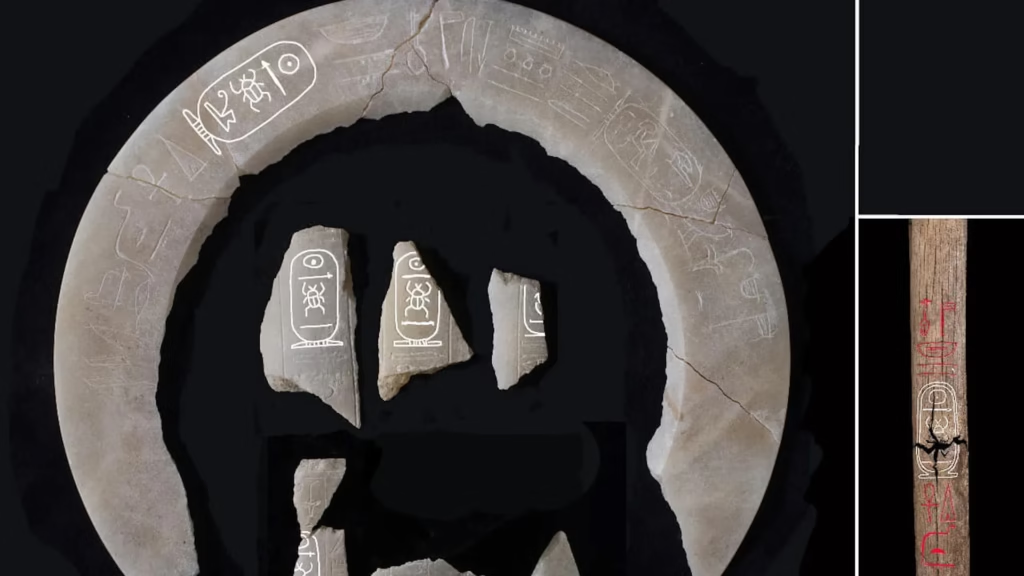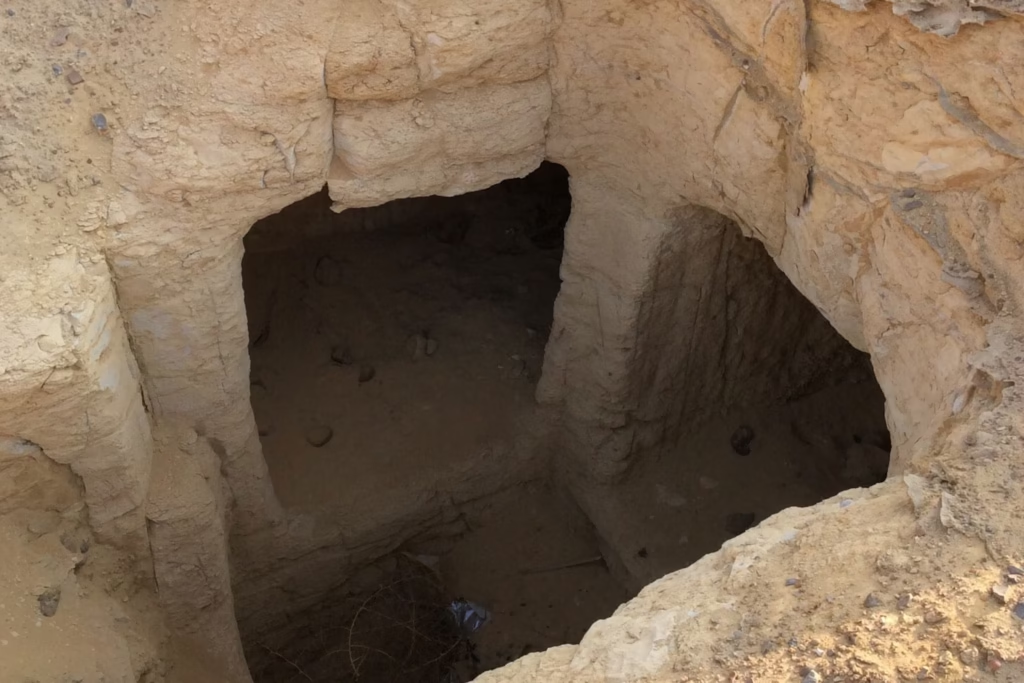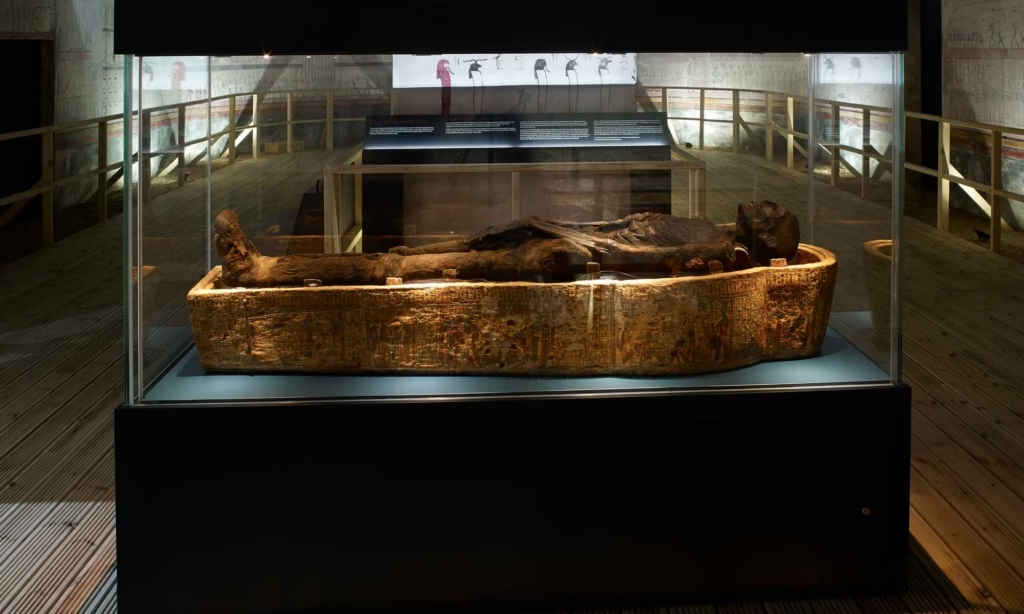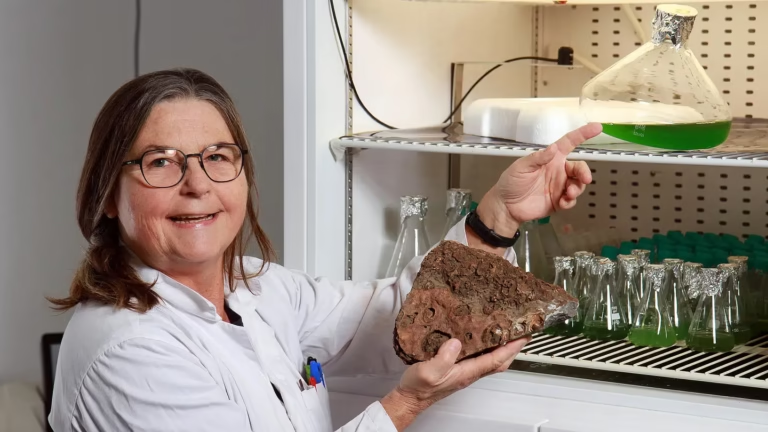Remarkable Discovery! Ancient Egyptian King Thutmose II’s Tomb Unearthed

In a groundbreaking development, archaeologists have uncovered a royal tomb belonging to King Thutmose II, an ancient Egyptian ruler who reigned between 2000 and 1001 BC. The discovery, described as “remarkable” by officials, sheds new light on a figure who has remained somewhat mysterious in Egyptian history. This tomb, located in the Luxor region near the Valley of the Kings, is one of the most significant archaeological finds in recent years.
A Surprising Discovery
The tomb, originally labeled “Tomb C4,” was first discovered by a joint Egyptian-British archaeological team in 2022. Initially, the team believed it belonged to one of the royal wives, due to its proximity to the tombs of Queen Hatshepsut and King Thutmose III’s wives. However, as the excavation continued, the team began to uncover evidence suggesting the tomb was, in fact, the burial site of King Thutmose II.

Credits: Straight Arrow news
Piers Litherland, the field director at the New Kingdom Research Foundation, expressed surprise at the findings. He noted that many initially believed the site was a burial place for royal women, rather than a king. The location itself is unusual for a king’s tomb, as it sits beneath two waterfalls at the bottom of a slope that would have been prone to flooding during the 18th Dynasty’s wetter weather.
Evidence of Thutmose II
Several key pieces of evidence confirmed the tomb’s association with Thutmose II. Fragments of alabaster jars inscribed with the king’s name were found within the tomb, along with inscriptions referencing his wife and half-sister, Queen Hatshepsut. These discoveries were crucial in definitively linking the tomb to Thutmose II, an enigmatic ruler whose reign remains a subject of debate.

Credits: nationalgeographic
Although much about Thutmose II’s life remains unknown, scholars suggest his reign could have lasted anywhere from three to fourteen years. The tomb, while offering limited details about his life, does provide insight into the complex relationships within the royal family. Notably, the discovery suggests that Thutmose II was buried by Hatshepsut, not by his son, Thutmose III, who would later become one of Egypt’s greatest pharaohs. This finding could explain why Thutmose III later sought to distance himself from Hatshepsut and emphasize his own connections to his father and grandfather.
A Tomb in Poor Condition
Despite its importance, the tomb was found in a dilapidated state. Flooding soon after the king’s death caused significant damage to the tomb’s interior. Preliminary studies suggest that many of the tomb’s original contents may have been relocated to another site. However, the archaeological team was able to restore some of the fallen plaster fragments within the tomb.

Credits: Bolton’s Egypt
Among the preserved fragments were portions of blue inscriptions, yellow star motifs, and parts of the Book of Amduat, a sacred text often associated with royal Egyptian tombs. These remnants offer invaluable insights into the religious and cultural practices of the time.
A Prototype for Future Royal Tombs
The architectural design of the tomb, although simple, is notable for its significance in the broader context of Egyptian royal tombs. Litherland described it as a prototype for the grander tombs of the 18th Dynasty, influencing subsequent royal burials. This revelation further emphasizes the historical importance of Thutmose II, despite the limited knowledge surrounding his reign.
Continuing Excavations
The discovery of Thutmose II’s tomb marks just the beginning of an ongoing archaeological journey. The mission team, led by the Supreme Council of Antiquities and the New Kingdom Research Foundation, plans to continue exploring the area. Their goal is to uncover additional secrets of the region and perhaps locate the final resting place of the tomb’s original contents, offering new perspectives on ancient Egyptian history.
This remarkable find opens a new chapter in the study of ancient Egypt, providing scholars and enthusiasts alike with fresh clues into the lives of its long-lost rulers.






